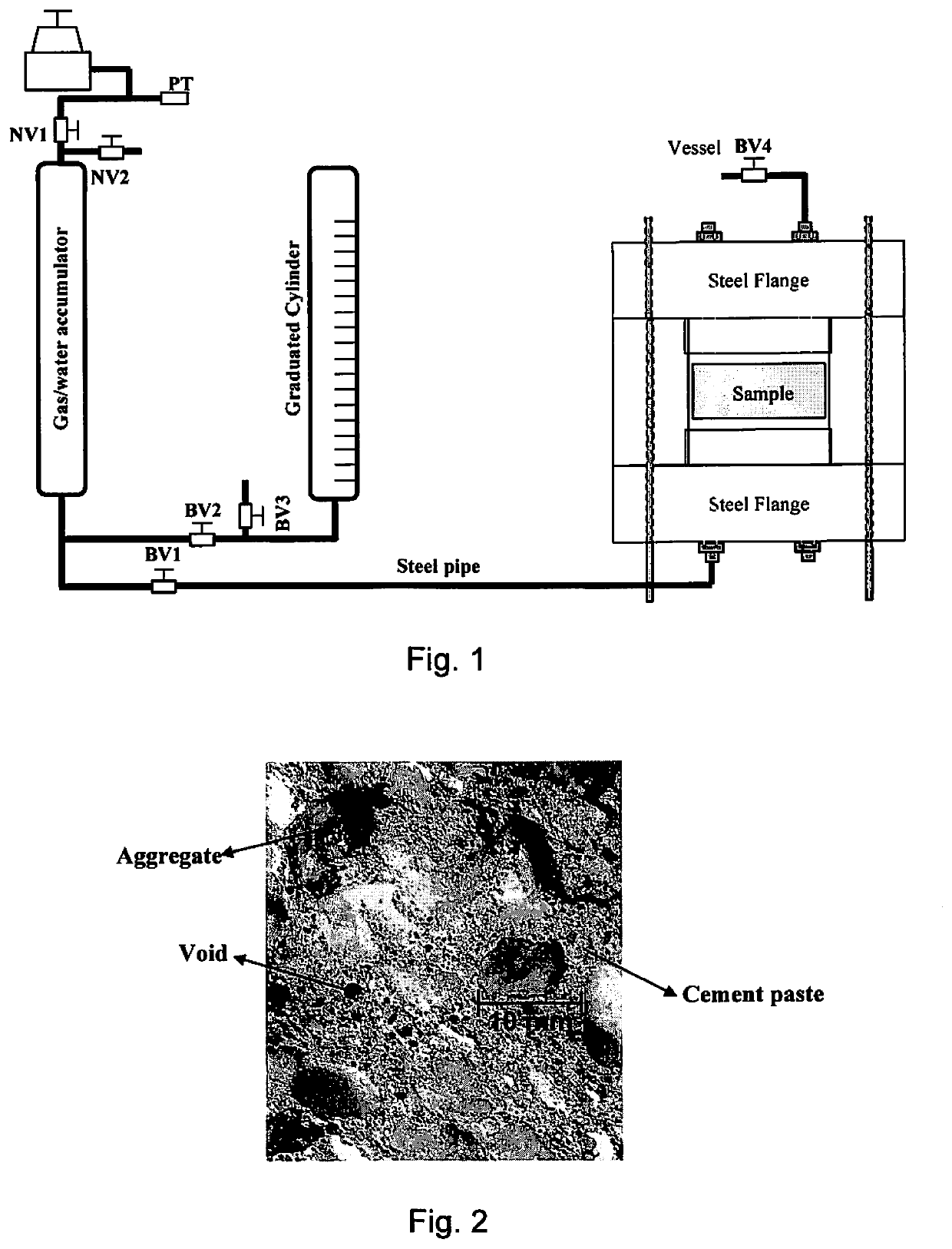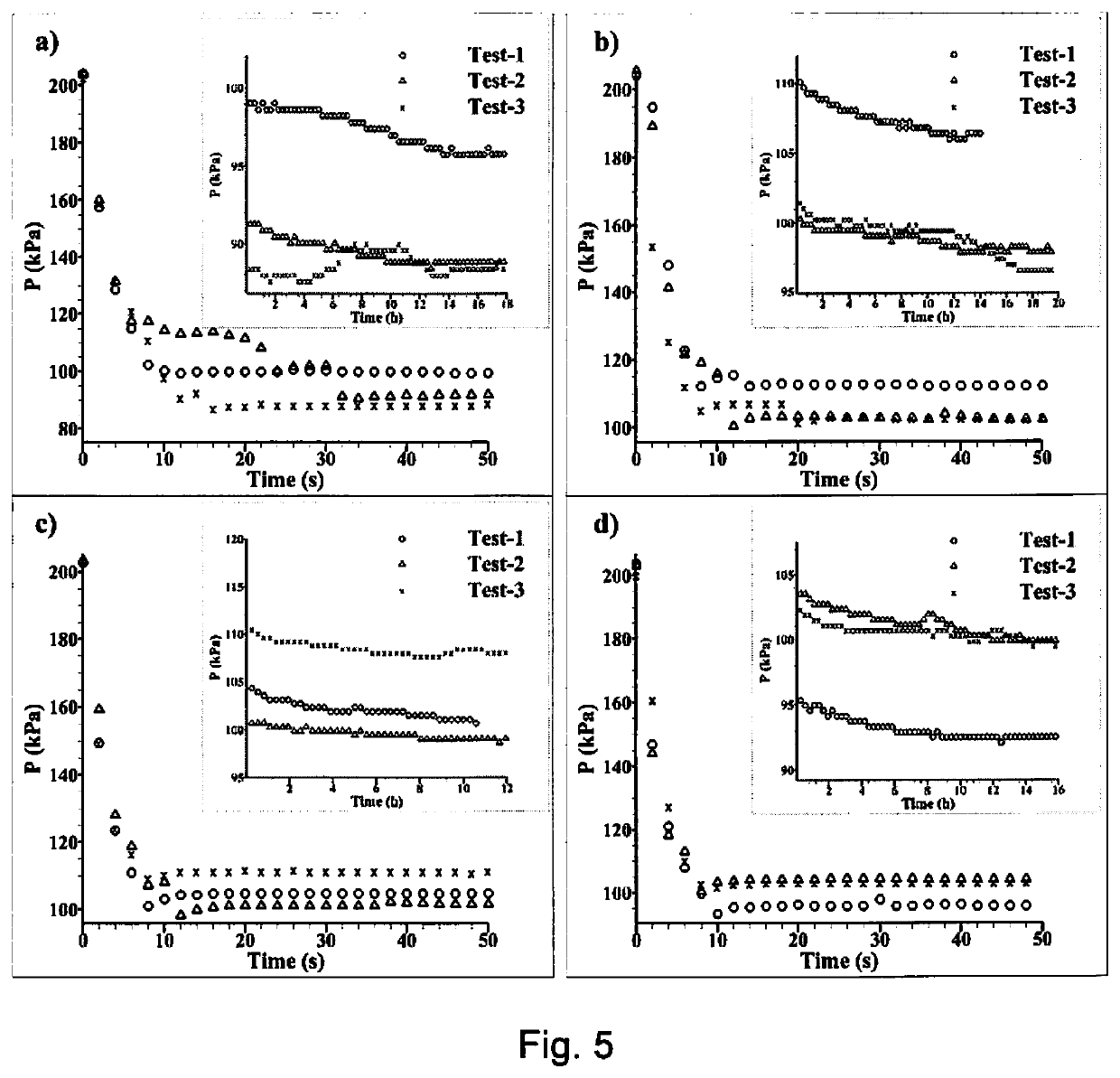Characterization of Porous Materials Using Gas Expansion Induced Water Intrusion Porosimetry
a technology of gas expansion and porous materials, applied in the direction of permeability/surface area analysis, suspension and porous material analysis, instruments, etc., can solve the problems of only valid washburn model, corroded embeded reinforcement, and compromise of performan
- Summary
- Abstract
- Description
- Claims
- Application Information
AI Technical Summary
Benefits of technology
Problems solved by technology
Method used
Image
Examples
Embodiment Construction
[0035]Disclosed herein is a novel gas / water intrusion apparatus that modifies the prior gas expansion method to create a novel type of Porosimetry, which is referred to herein as Gas Expansion Induced Water Intrusion Porosimetry (GEIWIP). In particular embodiments used to experimentally confirm the operability and reliability of the inventive equipment and procedure, argon gas and water were stored in an accumulator that allowed water to fill the pores of the material sample instead of gas. Gas expansion occurred during water intrusion into the porous material. The experimental condition was not required to be necessarily isothermal. Due to the differences between properties of water and gas (e.g. density, viscosity), the variations of pressure occurred slowly, allowing the pressure-time history to be recorded. The pressure versus time data can allow determination of pore size distribution and permeability calculation. In the experimental testing summarized herein, GEIWIP was carrie...
PUM
 Login to View More
Login to View More Abstract
Description
Claims
Application Information
 Login to View More
Login to View More - R&D
- Intellectual Property
- Life Sciences
- Materials
- Tech Scout
- Unparalleled Data Quality
- Higher Quality Content
- 60% Fewer Hallucinations
Browse by: Latest US Patents, China's latest patents, Technical Efficacy Thesaurus, Application Domain, Technology Topic, Popular Technical Reports.
© 2025 PatSnap. All rights reserved.Legal|Privacy policy|Modern Slavery Act Transparency Statement|Sitemap|About US| Contact US: help@patsnap.com



